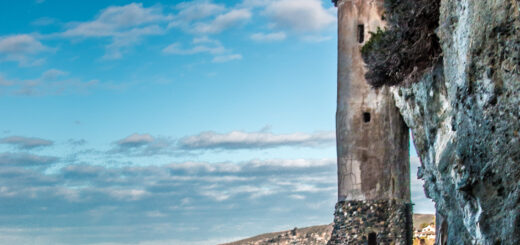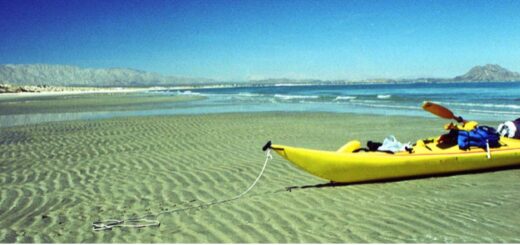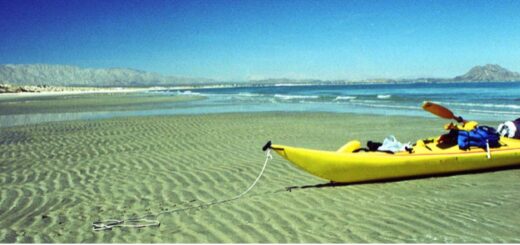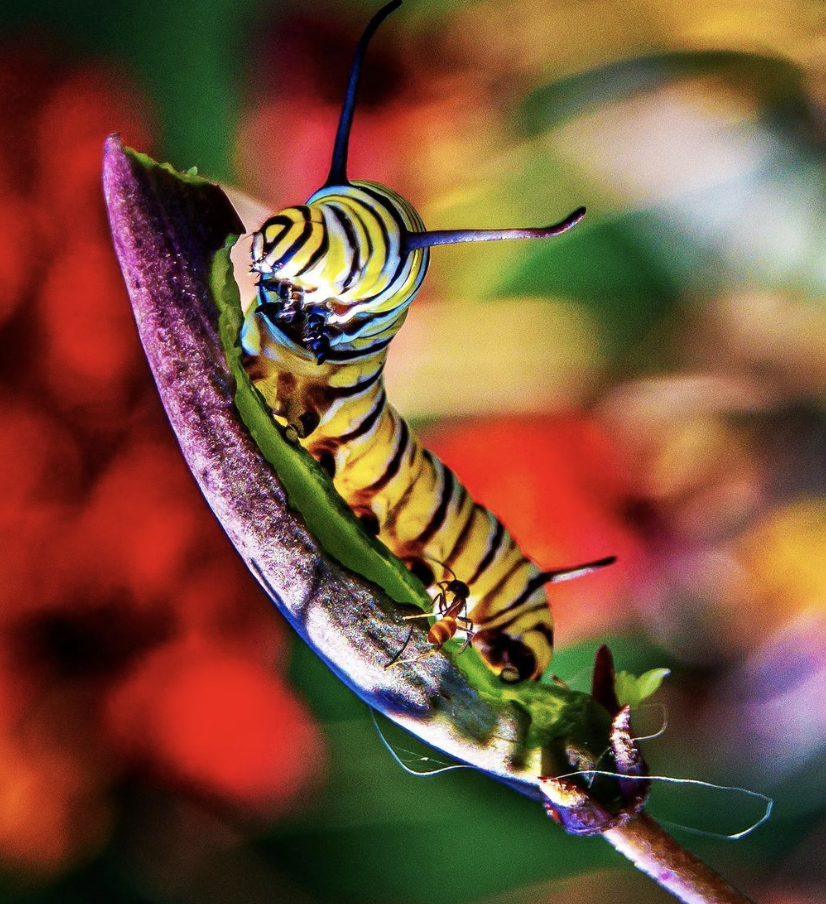Tides of Change: The Story of Baja’s Panga Fishermen
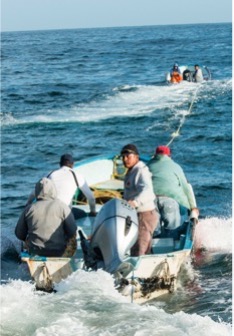
Introduction
My father was a commercial fisherman, and I grew up experiencing the albacore and lobster fishing community of San Pedro, California in the 40s and 50s. As a result, I have always been fascinated with fishermen and fishing communities around the world. Living in southern California most of my life, I’ve traveled the length of Baja several times, visiting the small villages and larger cities along Highway 1. During several vacations and lengthy sea kayaking trips I’ve had the opportunity to see fish camps of Baha panga Fishermen who make their living in the Gulf of California (also known as the “Sea of Cortez”) and Pacific coast of Baja California.
This is the story of Baja’s Panga Fishermen and their families who rely on small boats and hand-held nets to catch fish as they struggle to maintain their way of life on the Baja coast.
Sea of Cortez
Gaze upon the Baja Peninsula and the Sea of Cortez from outer space, and you’ll be struck by its awe-inspiring jagged finger-like shape that spans an incredible 850 miles. Mountainous ridges of bare earth, fiery lava, and rugged granite jut out defiantly, as if daring any onlooker to come closer. The Sea of Cortez heaves and swells in sync with the lunar cycles, its restless surface an endless dance of light and shadow. There’s no place quite like this land of contrasts, where the stark, unyielding geology, relentless sun, and scarce water resources combine to create an environment that’s both isolating and dangerous.
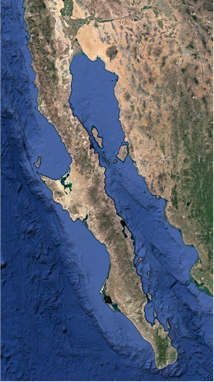
The Sea of Cortez is a unique body of water located between the Baja California Peninsula and the Mexican mainland. It is one of the most biodiverse seas in the world, with over 900 species of fish and a wealth of marine mammals, such as dolphins, whales, and sea lions. Just north of San Felipe is the mouth of the 1,400-mile-long Colorado River which, before it was trapped behind hydroelectric dams, was the primary source of freshwater for the Sea of Cortez. It is one of the most significant rivers in the United States, flowing through seven states and two countries before emptying into the sea. For millions of years the river brought nutrients and sediment that contributed to the fertility of the waters, allowing for a diverse and thriving ecosystem. The Colorado River Delta, where the river meets the sea, is one of the most productive and fertile regions in North America where the combination of the warm water, weather conditions, and the contribution of the Colorado River make it a rich and productive ecosystem. All that Rocky Mountain spring runoff brought massive quantities of nutrient rich, brownish-red silt to the waters around San Felipe that may have have been the source of one Spanish language name for the Sea of Cortez, “El Mar Bermejo”, or the “Vermilion Sea”. But that was before the Colorado River dried up a hundred miles north of the Sea of Cortez. Now a tiny pond along with a few other wet spots scattered about the vast floodplain are all that remain of this river. The rest is irrigating fields in Arizona and California or providing hydropower to Las Vegas.
The Sea of Cortez’s location and climate also play a vital role in creating a bountiful sea. It is a semi-enclosed sea, which means that it is surrounded by land on three sides and connected to the Pacific Ocean through a narrow opening. This location creates a unique oceanographic environment that provides the perfect conditions for marine life. The sea’s warm, shallow waters promote the growth of phytoplankton, which is the base of the food chain. The warm water also attracts a wide variety of marine life, including large schools of fish, whales, and sea turtles.
The Prize
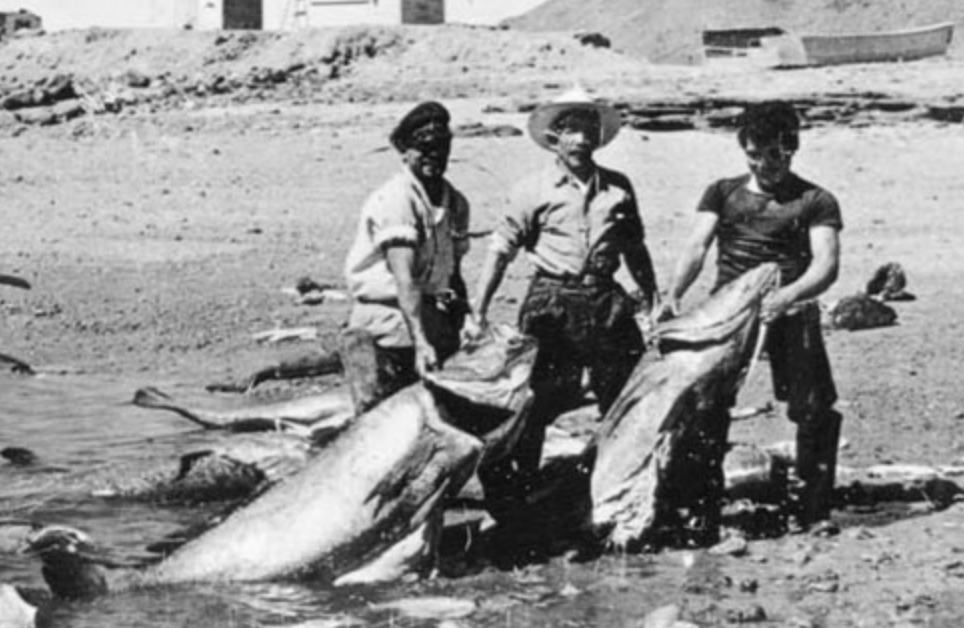
Looking at the monotonous underwater profile of San Felipe’s fishing waters, one might be tempted to assume that there would not be many fish or other types sea life found in this fairly large, shallow, and relatively featureless area.
While it is true that major offshore sportfishing quarries such as marlin, tuna, and dorado do not generally swim as far north as San Felipe, these shallow, nutrient-rich local waters actually have been some of Mexico’s most productive for massive quantities of commercially caught shrimp and a surprisingly wide variety of fish species, including the now endangered totoaba, Totoaba macdonaldi, an amazing member of the humble croaker family that grows to the size of a very respectable billfish.
Enormous totoaba, weighing up to about 200 pounds by some accounts and up to about 300 pounds in others, once swam and spawned in local San Felipe fishing waters in schools so dense they could literally be harpooned with one’s eyes held closed. But like the once “limitless” bottom population of shrimp that also swam in the northern Cortez, the totoaba and many other fish species in the San Felipe area were reduced to just a fraction of their former number by disastrous commercial overfishing from the 1950s onward.
Erik Vance recently wrote in Harpers Magazine:
“Jacques Cousteau once called the Sea of Cortez, also known as the Gulf of California, the “Aquarium of the World,” citing both its extraordinary variety of life and its accessible bounty. In many ways, the sprawling sea is the world’s ocean writ small. The west is deep and rocky; the east, shallow and sandy. In the Upper Gulf, temperatures can swing from chilly in the winter to hot and tropical in the summer. The water is crystal clear in some places, murky in others. It hosts an astounding 950 fish species, 10 percent of which are found nowhere else in the world, including the world’s most endangered marine mammal — a diminutive porpoise called the vaquita (“little cow”).
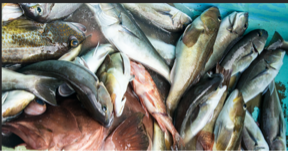
This very abundance, of course, has ensured the Sea of Cortez a key role in Mexico’s economy. It supports 80 percent of the nation’s commercial fishing and almost 90 percent of its shrimp catch, and directly employs 60,000 people. Fishermen working the sea’s 26,000 boats are both rich and poor, newcomers and inheritors of thousands of years of tradition. The sea is perfectly situated to supply the hungriest markets — the United States, Japan, and now China — and over the past few decades it has seen one of the world’s largest drops in biomass. Eighty-five percent of its species either are being fished at their maximum or are overexploited. Consequently, there is no better place on earth to look at the future of global fishing and the crisis facing the oceans.”
The Panga
It seems obvious that there is very close connection and dependence of Baja fisherman on their pangas. But this was most clearly brought to my attention on one morning during a month long, 340-mile solo sea kayak trip that I experienced from San Felipe to Santa Rosalia on the coast of the Sea of Cortez. On my second day of kayaking, I had camped for the night on a lonely stretch of beach about 15 miles south of San Felipe. When I awoke just before dawn, I noticed a panga anchored and floating a couple of hundred yards offshore, apparently unoccupied. To my surprise, just after dawn I noticed some movement and saw a man stand up in the panga. He must have been sleeping in the panga all night and after a few minutes he began to pull on a long rope that extended towards the shore. A few minutes later, as the sun came up, I was able to see a trail of floats leading from the panga toward the shore. Soon I could see that he was retrieving a long gill net that was anchored on one end not far from the shore. Occasionally he stopped to remove a small fish that he threw into the front of the panga. As the sun rose, I searched up and down the shore with my binoculars and I could see many nets were set perpendicular to the shoreline, perhaps all belonging to this fisherman. I wrote in my diary, “There were so many nets that I’m surprised that there were any fish left around here at all.”
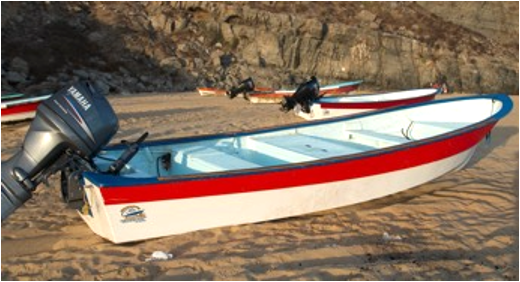
The boats they launch, of course, are pangas. First designed and built of fiberglass in the early 1960’s in La Paz, Baja, the panga was simple – no inside floor, no cockpit, no extraneous features – but it was efficient and cost-effective, and it had superior handling and carrying capacity. Two or three fishermen with nets and longlines could go through the surf, travel 20 or 30 miles and bring back a sizable load in a boat that was easy to handle, stable, seaworthy, and very safe. The panga’s versatility and durability have made it an indispensable tool for fishing communities everywhere. Its flat bottom and shallow draft allow it to navigate through shallow waters, while its sturdy hull can withstand the rough waves of the open sea. With its modest size and low fuel consumption, the panga is an economical choice for fishermen who rely on their catch for their livelihood.
In many ways, the panga boat embodies the spirit of the fishing communities that created it. Its humble origins and practical design reflect the values of hard work, ingenuity, and a deep respect for the sea.
Panga Fishermen
The panga fishermen of Mexico are a rare breed. They live and die by the sea, eking out a living from its depths in small boats called pangas. These men are as rugged and weathered as the coastline they call home. Their lives are hard, their work even harder, yet they persevere day after day in pursuit of the elusive catch that will keep them afloat. They are a subculture of individuals who have honed their craft over generations, passing down knowledge and skill from father to son. To them, the sea is not just a means of survival, but a way of life – one that is both challenging and rewarding. For the panga fishermen of Mexico, there is no greater pride than the satisfaction that comes with a successful day’s work, and no greater joy than the sense of camaraderie that comes from sharing the sea with fellow fishermen. They are a testament to the resilience of the human spirit, and a reminder that in the face of adversity, there is always hope.
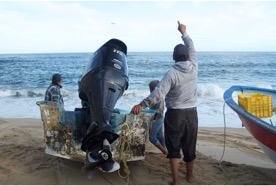
Fish Camps
My first experience visiting a ponga-based fish camp was when we were visiting my wife’s relatives in La Paz, near the south end of Mexico’s Baja peninsula. The family we were visiting had several connections with fisherman in the La Paz area, and I had an opportunity to visit an isolated fish camp north of La Paz, where I stayed for several nights with three Mexican fisherman. As I learned much later there are really two types of fish camps on the Baja peninsula, those accessible by road and those only accessible from the sea. The accessibility of these camps made all the difference when it came to amenities and the time or frequency that they could be occupied. The camp north of La Paz was accessible by a long and rather rough road and although it could be easily supplied with necessities, it still had the look of a homeless encampment. It was constructed from a few pieces of driftwood covered with cardboard and some plywood. Mostly it was just open to the wind and elements with a covered area of plywood and palm fronds and furnished with various boxes and barrels. A standard item in almost every fish camp that has road access is one or more salvaged refrigerators lying on its back and serving as a huge ice chest. The access road allowed for delivery of ice and export of fish and shellfish.
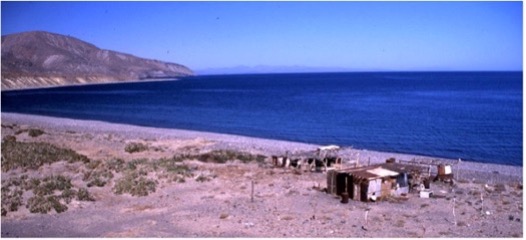
The camp was small and only used by three fishermen with one panga. Days in the fish camp were spent fishing, sleeping, cooking, baiting hooks and traps, entertainment, and survival. On the other hand, the fishing work is demanding and often backbreaking. Fishermen can spend hours pulling in nets that weigh hundreds of pounds or diving for hours into the ocean to collect fish and invertebrates. On the one hand, whenever there is a free moment and well into the night the fishermen play dominoes, drink, and tell an endless string of stories and jokes. Only Spanish was spoken at the fish camp I was at and, being that I only had two years of high school Spanish, there was always a hilarious and futile attempt to explain the punch line of every joke to me.
Cooking in the camp was accomplished with the use of a barrel cut short and used for burning firewood. A flat griddle called a “comal” made from cast iron was used for cooking tortillas, roasting chiles, and frying fish. Breakfast was always chilaquiles mixed with scrambled eggs and a side of refried beans and tortillas.
The fishermen in this camp focused on the collection of fish and shellfish of the nearby rocky coastline by using a technique called “escafandra” (“diving suit” in English) which involves wearing a diving suit and helmet that allows them to dive to depths of up to 30 meters (100 feet) while breathing through a hose attached to a compressor on the surface. This technique is like the traditional diving methods used by pearl divers in the region for centuries.
Using this method, the fishermen can dive down to the ocean floor and manually harvest a variety of shellfish and other seafood, including lobsters, octopuses, clams, and abalone. The diving fishermen use specialized tools to pry the shellfish off rocks and out of crevices, and they must navigate difficult underwater terrain and avoid marine animals such as sharks and stingrays.
In addition to the challenges of diving during the day, these fishermen also went diving at night. This adds an extra layer of difficulty as visibility is limited, and the conditions can be even more dangerous. Despite the risks, night diving can be a very productive time for fishing as many species of fish are more active at night.
While kayaking on the coast of the sea of Cortez between San Felipe and Santa Rosalia, I passed many isolated fish camps that were even more primitive than the one I described near La Paz. Because these fish camps had no road access, they were even more primitive, basically providing only wind and sun protection. About a mile south of Punta El Muerto I found a deserted fish camp on a long sandy beach. Like most fish camps it had a small shack that was constructed from plywood and cardboard. The shack had a separate room with a makeshift cot for a bed, a barrel for a cooking fire, an old metal grill, and a refrigerator laid on its back for use as an ice box. There were no roads leading to this place and everything was brought here by panga. There were fish heads floating in the surf at the high tide line; apparently the fishermen must had been there in the last few days. They were mostly bottom fish, skates, sharks, and some ugly looking fish I didn’t recognize.
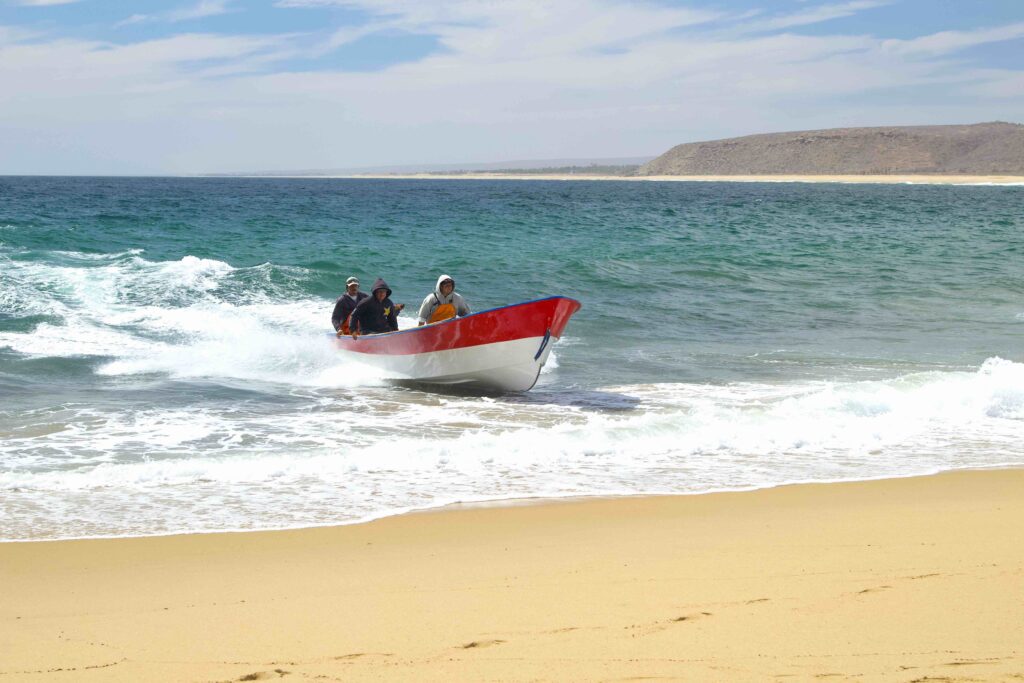
The camps themselves are often situated in idyllic locations, surrounded by stunning natural beauty and crystal-clear waters teeming with marine life. Large fish camps like the one at Punta Lobos, have a sense of community where the individual boat crews help each other launch through the surf. One common method they use when launching through big surf is to link the boats together with long ropes and launch them in sequence. After the first boat is launched it pulls the second boat through the surf, and the second boat pulls the next and that continues boat by boat until all have been launched.
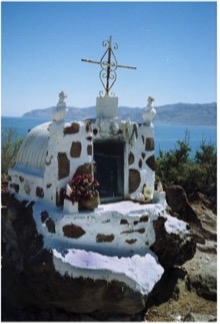
In Bahia Las Animas, there is constant panga traffic going to and from the long-established fish camp that takes the name of this bay. Before dawn, the high whine of outboard motors could be heard leaving the fish camp and traveling miles up and down the coast to where gill nets had been set. Early in the morning they would start retrieving and resetting the gill nets. The fishermen slept on the boat during the middle of the day and retrieved the nets one more time before going home in the dark. Sometimes, when they had engine trouble or when the winds came up unexpectedly, they would not make it home until late in the night, or perhaps not until the next day. On top of a rocky point at Bahia Las Animas, the fisherman built a shrine where their wives light religious candles and pray for the safe return of their men.
Economic & Social Challenges
One of the biggest challenges facing panga fishermen in Mexico is the competition from large-scale commercial fishing operations. These operations use advanced technology and more efficient techniques to catch fish on a much larger scale, often with devastating consequences for marine ecosystems. The panga fishermen, on the other hand, are limited in their catch and often struggle to compete with the large commercial boats.
The economic challenges facing panga fishermen are compounded by social issues such as poverty, lack of access to education and healthcare, and political corruption. Many panga fishermen live in rural areas where job opportunities are scarce, and they struggle to provide for their families. Some have been forced to turn to illegal activities such as drug trafficking or poaching to make ends meet.
One very well-established large fish camp near Todos Santos has recently experienced a concerted effort by developers to take away the road access and remove the fishermen from their traditional fish camp. The town of Todos Santos is located about 50 miles north of Cabo San Lucas and has traditionally been a quiet fishing village with a small population. However, in recent years, the town has seen an influx of tourists and developers who are attracted by the area’s natural beauty and tranquil lifestyle. As a result, the demand for land and housing in Todos Santos has increased, leading to rising prices and a shift in land use towards residential and hotel resort development.
One of the areas in Todos Santos that is particularly attractive for development is Punta Lobos. Punta Lobos is a stretch of coastline located about 3 miles south of the town center and is known for its pristine beaches and world-class surf breaks. The area has become a hot spot for developers who are looking to build luxury homes and hotels that offer stunning ocean views and easy access to the beach. A relatively large panga-based fish camp is located at the southern end of Punta Lobos beach.
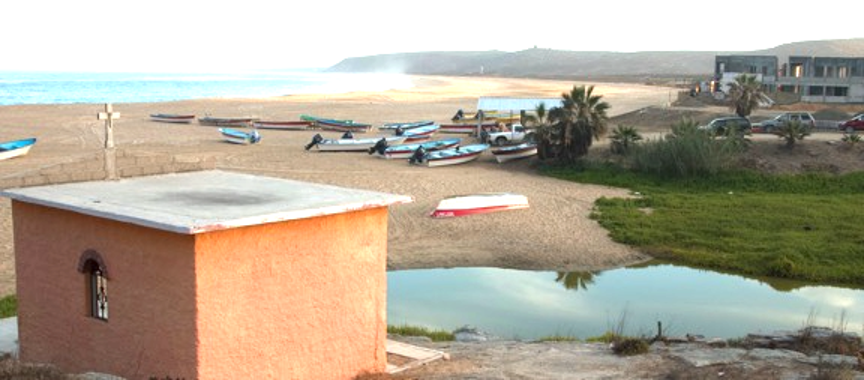
For generations, the fishermen of Punta Lobos had fished the rich waters off the coast of Baja California, relying on the sea for their livelihoods. The fishing community at Punta Lobos is tightly knit, and the fishermen work together to share knowledge and resources. The panga fishing community consists today of about 40 pangas, with access by road to nearby Todos Santos and Cabo San Lucas. Their easy access to Todos Santos and Cabo San Lucas makes Punta Lobos well placed to supply fish to local restaurants and markets, making this panga fishery particularly valuable for the local economy.
But when a developer announced plans to build a luxury condominium complex of almost 5,000 residences called “Tres Santos” on the shores and roads of Punta Lobos, the fishermen knew they were in for a fight. The developer promised jobs and economic growth for the village, but the fishermen were skeptical. They knew that the construction of such a large development would have a devastating impact on the fragile ecosystem of the area, and they feared for the future of their way of life.
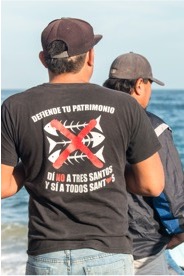
The fishermen organized protests and demonstrations, gathering support from environmental groups, and concerned citizens across Mexico. During one confrontation the fishermen stood guard for hours across the narrow dusty road that leads to Punta Lobos, the only protected point along the coast where local fishermen can directly access the sea with their pangas, and the exact place where Tres Santos was building their beach complex.
Despite the opposition, the developer pushed ahead with construction, bulldozing pristine coastline, and displacing residents to make way for the luxury condos. The fishermen refused to back down, setting up camp on the beach and continuing their protests. The conflict came to a head when the developer attempted to shut down the fishermen’s access to the sea. They claimed that the fishermen were trespassing on private property and used security guards to block their access to the beach. But the fishermen refused to be deterred. They staged a sit-in on the beach, refusing to move until their rights were respected. The situation grew tense as the security guards attempted to disperse the fishermen, but the villagers stood firm, refusing to give up their way of life without a fight.
In the end, the fishermen retained some road access to the beach. The developer has been able to build a hotel adjacent to the beach, but the larger development is still in question. The fishermen were able to retain their access to the sea and preserve part of the fragile ecosystem that had sustained their village for generations. The conflict had been a difficult and trying time for the fishermen of Punta Lobos, but it had also been a testament to their strength and resilience.
The Baha panga fisherman community is a subculture with shared life experiences and challenges that contribute to a strong sense of identity. One of the key challenges that this community has faced is discrimination and marginalization.
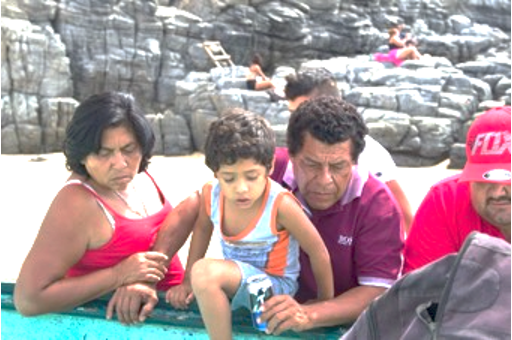
Historically, the Baha panga fisherman community has been marginalized by mainstream society, often being viewed as a lower class and disadvantaged group. This has led to a lack of access to resources and opportunities, as well as discrimination in areas such as education, employment, and healthcare. The community has developed a sense of resilience and determination in the face of adversity and has relied on each other for support and solidarity.
In addition to discrimination, the Baha panga fisherman community also faces challenges related to their livelihoods. Small-scale fishing is a difficult and often unpredictable occupation, and fishermen must contend with challenges such as changing weather patterns, overfishing, and government regulations that limit their access to fishing grounds. These shared experiences and challenges have contributed to a strong sense of identity within the Baha panga fisherman community. The community has developed its own culture, traditions, and way of life, which reflects the unique challenges and experiences of the fishermen.
Environmental Degradation & Overfishing
Challenges faced by panga fishermen include the impacts of environmental degradation and overfishing. Today water from the Colorado River is the lifeblood of the booming, if parched, American Southwest. Seven states and Mexico use nearly every drop of water in the Colorado, reducing a once lush delta on the Gulf of California to a trickle in a sunbaked mudflat. The demand for water from the Colorado River has far exceeded its natural supply in recent decades, leading to intense competition and conflicts between those that share the river’s resources. These challenges are only expected to intensify in the future, as population growth and climate change continue to strain the region’s water supplies. For the Colorado River delta in the northern part of the Sea of Cortez, that future has already been written. As a result, the delta has suffered from reduced water flow, increased salinity, and the loss of critical habitats. Once a thriving ecosystem, supporting a variety of plant and animal species, including migratory birds, fish, and other aquatic creatures, the delta has become increasingly fragile, and many species that once relied on the delta for survival have been pushed to the brink of extinction.
I have read many articles about the decline of fisheries in the Sea of Cortez. There are many theories about the cause. One theory is that the dams on the Colorado River, most of them built as make-work projects after the great depression, had stopped the flow of nutrients and silt into the northern Sea of Cortez. Over time, it was thought, the lack of nutrients would result in a decline in the productivity of these waters. If that is the cause, there is some hope, because the dams are silting up and eventually the silt and nutrients will start flowing again.
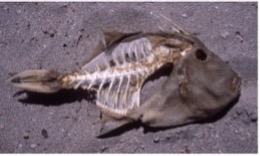
The theory given most weight is that intense fishing over the last 30 years or so has cleaned out just about everything. The Sea of Cortez seems so large to me in my small kayak and there were so few people that it’s hard to believe that fishing could have such an impact. But I had watched the trawlers dragging their nets hour after hour; methodically altering their course to make sure that no spot escaped their catch. The otter boards pulled the nets wide and the cables at the bottom of the net scoured the bottom and captured everything in its path. People on the Baja side of the Sea of Cortez complained that fleets of unlicensed and ungoverned trawlers from the mainland have eaten into the livelihood of local fishermen and caused a massive decline in the number of fish. Local fishermen, who once used hooks and lines, now almost exclusively use mono-filament gill nets that effectively capture every near-shore fish that is moving up and down the coast.
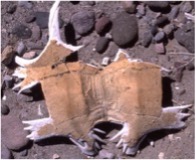
In the 1960s, leatherback turtles were so numerous in the area that people used to say you could reach Tiburón Island by walking on their backs. They seemed to drive the entire economy: in 1962 alone, fishermen pulled 186 tons of turtles out of a single bay, the Bahía de los Angeles. In the early 1970s, Kino lobster divers made a strange discovery. During the winter, the reptiles lazed on the seafloor, barely moving for months. Thus began a decade-long bonanza as divers picked thousands of turtles off the ocean bottom. Fishermen from around the country flooded into Kino (aided by March to the Sea, a government program established in the 1950s that encouraged the unemployed to take up fishing), and by 1982, the turtle population in the bay had declined by 96 percent. By 1990, when Mexico announced a nationwide ban on turtle fishing, they were nearly extinct.
During my kayaking trip along the coast of the sea of Cortez I would often do some beach combing along the stretch of beach where I landed for the night. At many places I was surprised to see how many porpoise skulls there were. With so many skulls on the beaches, I soon realized they were killed in gill nets or by the trawlers or purse seiners that I frequently saw working offshore. I began to think about how there were so few fish jumping, and I had not seen any of the massive feeding frenzies that the Sea of Cortez was notorious for. I had read the early accounts by John Steinbeck and Ed Ricketts in the book “Log of the Sea of Cortez” which described the unending schools of fish. I had seen the wrinkled and faded pictures of the giant Totuava, once caught daily by the score near San Felipe. I traveled slowly along the shore for 28 days in this fisherman’s paradise and I have seen hardly any fish. Where have all the fish gone?
While kayaking about one mile south of Punta Gorda at the 28th parallel, the border of Baja Norte and Baja Sur, I witnessed another indicator of environmental degradation. I began to see large numbers of jellyfish about 1-2 feet in diameter as I paddled along the shoreline. They were all floating with the bell up and seem to be distressed or dying. There were some that were washing right in the surf and there were also some stranded on the beach.
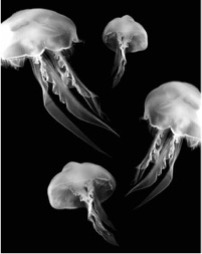
During recent years, jellyfish “blooms” have been noted in many parts of the world and an international symposium was held on the subject in 2000. In some places, jellyfish and bacteria are almost all that remain after all the desirable species have been fished out. Here in the Sea of Cortez, sea turtles used to graze on jellyfish. Sea turtles are easy to catch because they must come to the surface to breathe, and they can be worth hundreds of dollars to a lucky fisherman. I had traveled almost 340 miles down the coast and had only seen one sea turtle. For me, one of the most beautiful sights to see is a large jellyfish, pulsing through the water. But make no mistake about it, seeing lots of jellyfish means that there are no sea turtles here. The numerous jellyfish are a sign of a degraded coastal environment, and it is very difficult to imagine how full of life this ocean used to be.
In a 2010 article titled “Jellyfish: The Next King of the Sea” in Smithsonian Magazine, Abigail Tucker wrote: “The news media have tried out various names for this new plague: “the jellyfish typhoon,” “the rise of slime,” “the spineless menace.” Nobody knows exactly what’s behind it, but there’s a queasy sense among scientists that jellyfish just might be avengers from the deep, repaying all the insults we’ve heaped on the world’s oceans.” And, “It’s hard to tell what may be causing jellyfish to proliferate. The fishing industry has depleted populations of big predators such as red tuna, swordfish and sea turtles that feed on jellyfish. And when small, plankton-eating fish such as anchovies are overharvested, jellies flourish, gorging on plankton and reproducing to their hearts’ content (if they had hearts, that is).”
The Future
Can the Sea of Cortez ever recover? Tom Knudson, writing in the Sacramento Bee, tried to be optimistic, but then he had to face reality. He wrote:
“The sea is a recovery project waiting to happen. Nature provides the essentials: the desert sun, the sheltering Baja Peninsula, the nutrient-rich upwellings, the great fluid galaxies of plankton, the Pacific portal. The machinery is in place.
Today, reality has dulled the picture. The sea is being brutally overfished. Overfishing, though, doesn’t begin to describe it. The sea is being strip-mined; its kaleidoscopic marine life converted into everything from shark fin soup to fish tacos. And it’s happening fast. The sea is a vast piece of machinery — composed of billions of moving parts. But whole segments are being stripped away before anyone knows how they work or fit into the larger whole.”
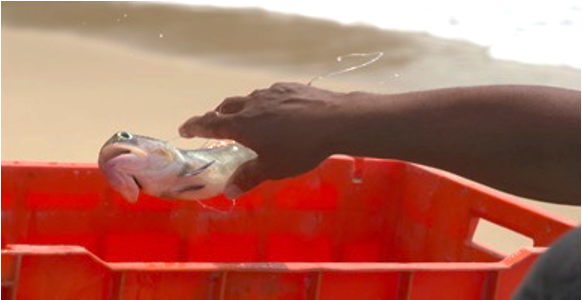
References
Greenberg, James. 2006. “Political Ecology of Fisheries in the Upper Gulf of California”. https://books.google.com/books?hl=en&lr=&id=Lwi2JDi9vBwC&oi=fnd&pg=PA121&ots=6R1URQjroA&sig=qlzjdb5NzFlIUE87Y_oVxUXhyCs#v=onepage&q&f=false
Kira, Gene. Undated. A Half-Century Old Sportfishing Tradition At San Felipe, Mexico. https://www.mexfish.com/sflp/sflp/motherships/motherships.htm
Mahieux, Viviane. 2016. “Brutal, opaque, illegal: the dark side of the Tres Santos ‘mindfulness’ eco-tourism resort. https://theecologist.org/2016/apr/29/brutal-opaque-illegal-dark-side-tres-santos-mindfulness-eco-tourism-resort
Panga Sports. Undated. The History of the Panga Boat. https://www.pangasports.com/post/the-history-of-the-panga-boat
Steinberger, Heather. 2017. The History of the Panga – The story behind pangas, the boat that changed the world. https://www.boatingmag.com/boats/history-panga/
Tucker, Abigail. 2010. “Jellyfish: The Next King of the Sea” Smithsonian Magazine
Wikipedia. 2023. Panga (Skiff). https://en.wikipedia.org/wiki/Panga_(skiff)

